The basic understanding of how to make a salve is very beneficial. I’ve put together an herbal salve recipe and instructions on how to make an herbal salve.After all, there are SO many reasons to make a salve in the first place!
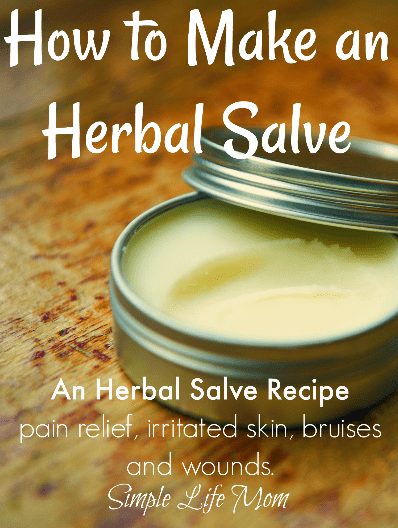
Here’s a short list of reasons you may want to make a salve:
- arthritis
- scars
- wound
- bruise
- joint pain
- burn
- hang nails and split fingers
- cracked heals
- headache
- sinus relief
There are ideas, and those were just the first ones off the top of my head.
Once you know HOW to create a salve, then you can add the herbs necessary to make that salve powerful and effective. If you’ve got the salve making part down, all you’ll need to research is the proper herbs to use (I can give you a head start there as well).
How to Make an Herbal Salve
Important Properties: natural, healthy ingredients, and smooth, creamy texture.
Salves are luxurious because you can use ingredients like shea butter, coconut oil, cocoa butter, and beeswax (or as a vegan alternative: sustainably harvested carnauba or candelilla wax). You know you are using healthy ingredients that will nourish as they work.
It’s easy to create a creamy texture that can easily spread on irritated skin or sore muscles. There are times where you don’t want to rub with force just to apply a substance. You want something soft and easy to apply. Salves meet that need.
Herbs
It’s important to understand which herbs are beneficial for your need so you are equipped to tackle all kinds of concerns (I’m all about helping others be more self sufficient and sustainable). Since there are literally thousands of herbs, how can you know which ones to use if you are new to herbalism?
One way is to join a group like The Herbal Academy and their Herbarium where they provide a library of herbs for you to learn about. You can also take courses that suit your needs. If you just want to get the basics they have the Family Herbalist Package. If you’d like to work in a business or as a Professional, they have courses toward that path as well. I’ve taken 3 courses from the Herbal Academy and have learned a great deal! I can’t wait for my next one on Wildcrafting.
Here is a short list of herbs for you to research to use in your salves:
- pain: ginseng, chamomile
- anti inflammatory: meadowsweet, boswellia (frankincense tears), turmeric
- calms irritated skin: lavender, chamomile
- bruises and burns: st john’s wort, plantain, mullein
- muscle cramps: valerian, devil’s claw
- dry, cracked skin: calendula, elder blossoms, comfrey
Herbal Oil Infusion
Once you’ve chosen the herbs you wish to use, you’ll need to make an oil infusion.
I like to use a hot oil infusion method. For the recipe below you’ll want to use approximately half a cup of oil to half a cup or dried herbs. Use 1 Tablespoons if you are using a powder instead of the dried leaf or flower petals.
- Place a glass measuring dish in a saucepan of water, creating a double boiler.
- Place 1/2 cup of oil and 1/2 cup of dried herbs in a glass measuring dish.
- Stir and heat over medium heat for 20 minutes.
If you want to save this oil infusion until later, can in a 4-8 ounce jar. Otherwise, you can go ahead and add additional ingredients right to the hot infusion and just strain before pouring into final salve pots. This means less steps and easy oil infusions!
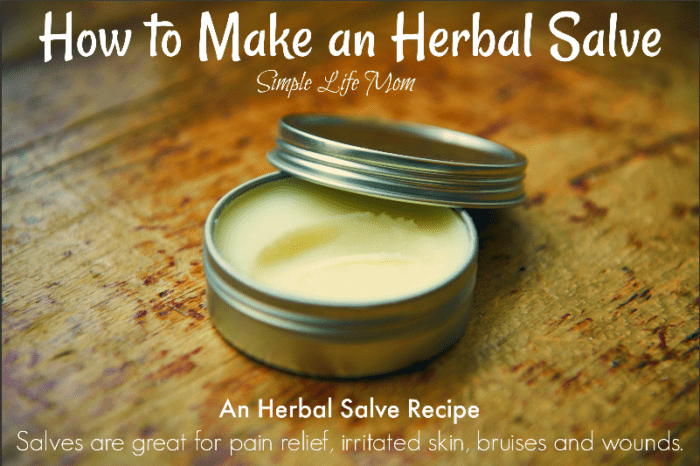
Herbal Salve Recipe
Instructions:
- 1/2 cup coconut oil
- 1/2 cup dried herbs
- 1 Tablespoon bees wax
- 1 Tablespoon shea butter
Directions:
- Combine coconut oil and herbs in a glass measuring dish and place in a saucepan of water to create a double boiler. Heat over medium heat for 20-30 minutes.
- Add beeswax and shea butter and heat until melted.
- Remove from heat and pour through a cheesecloth into small wide mouth jars. Allow to cool and seal until use.
- If using often, you can store in a cool dark place. If you know you will only be using occasionally, store in the refrigerator.
If you’d like to make this a softer salve, use less beeswax. If you’d like it harder, use more. You can always reheat and add more oil or beeswax if you need to.
Next, try your hand at making balms and lotions for the whole family.


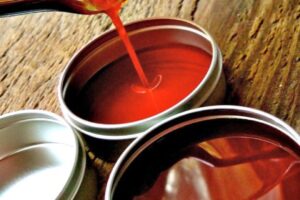
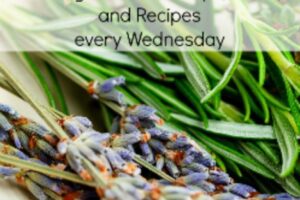

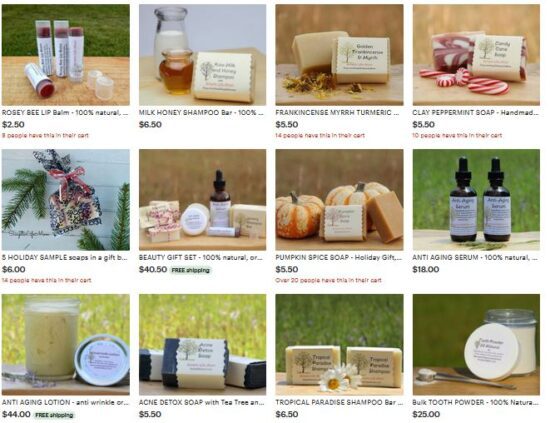
3 Comments
Leave your reply.